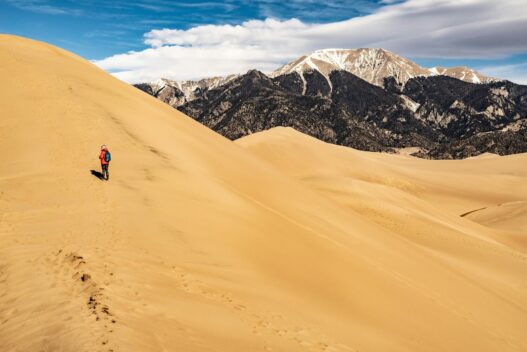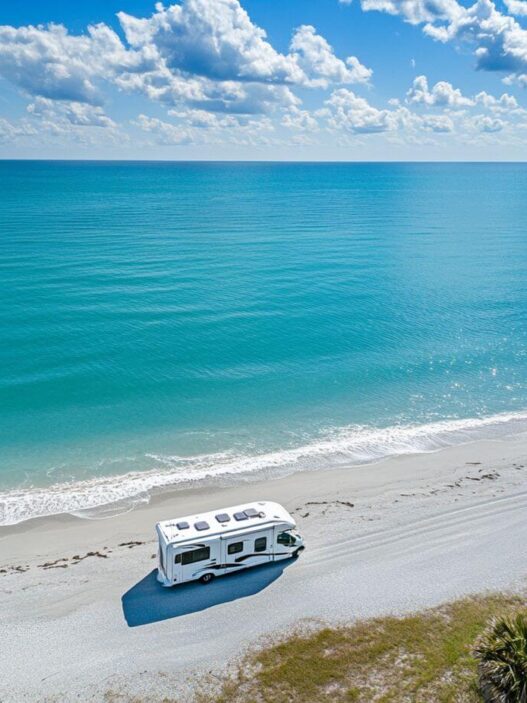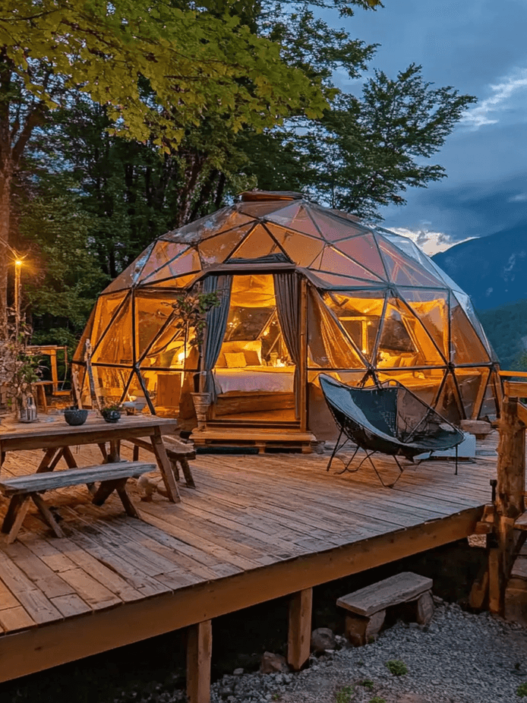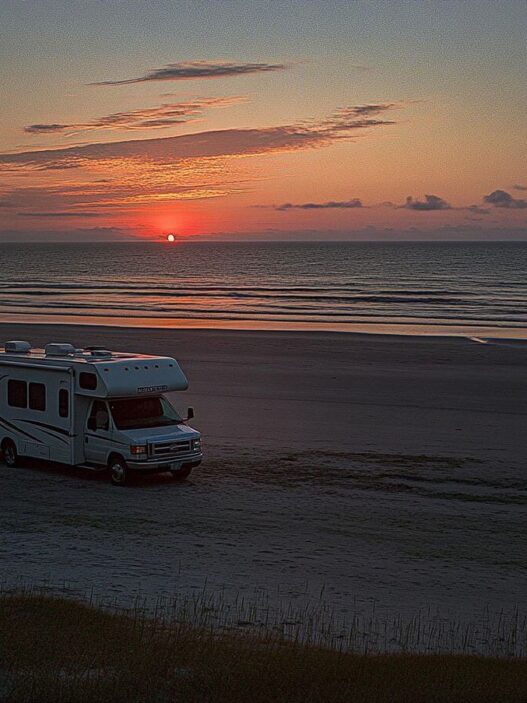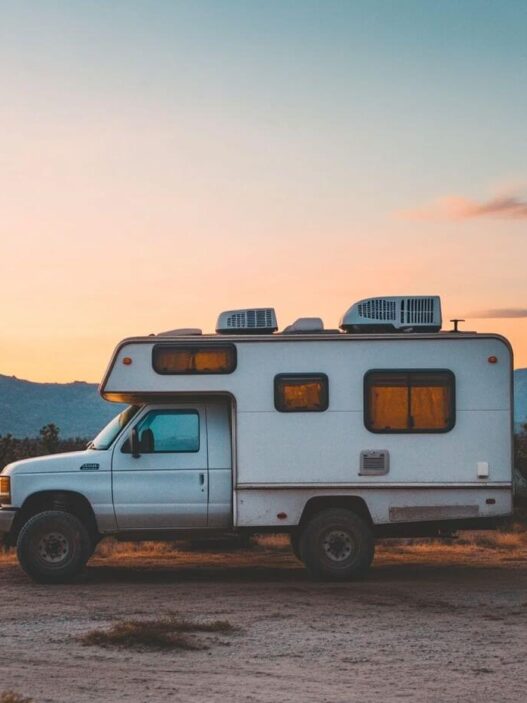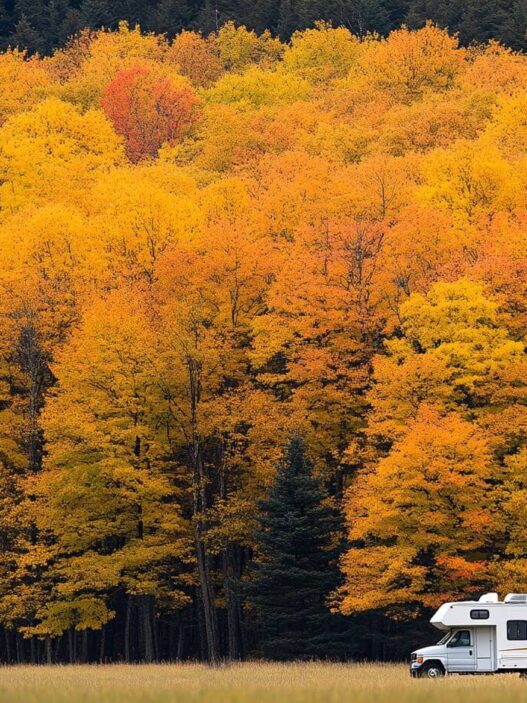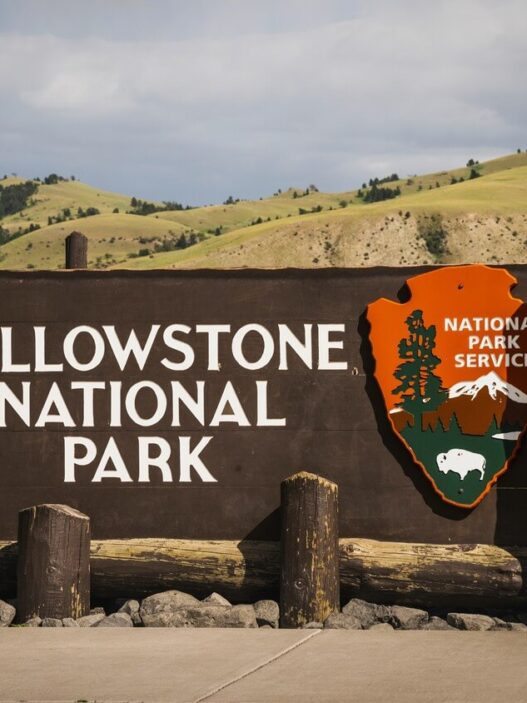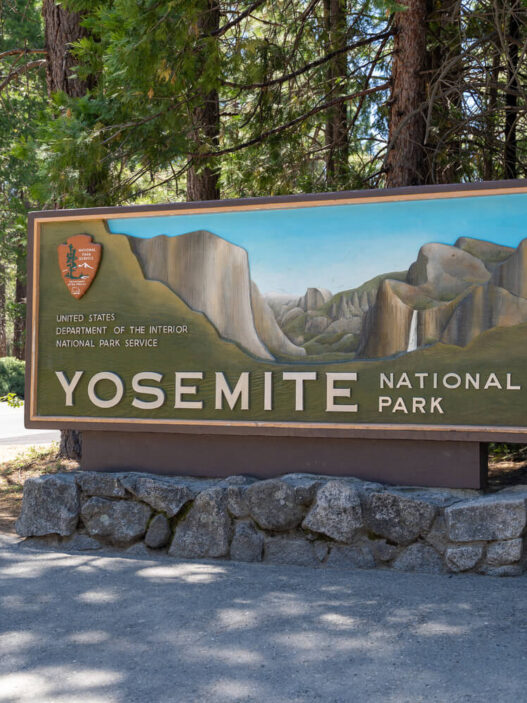While famous national parks like Yellowstone and Yosemite draw millions of visitors each year, savvy outdoor enthusiasts know that some of the most rewarding camping experiences happen in places that fly under the radar.
These lesser-known destinations often provide the perfect combination of natural beauty, solitude, and adventure without the crowds and reservation headaches of more popular sites.
1. Shi Shi Beach, Olympic National Park, Washington
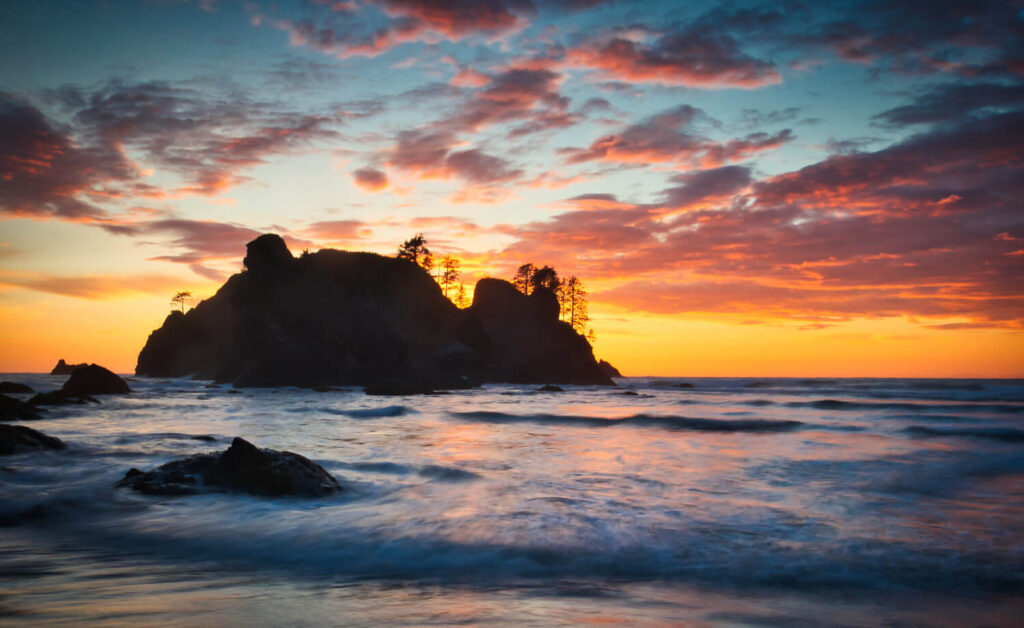
Located in the remote northwestern corner of Washington’s Olympic Peninsula, Shi Shi Beach presents a coastal camping experience that feels worlds away from civilization. Getting there requires effort, which is precisely why it remains relatively uncrowded despite its incredible beauty.
To reach this pristine stretch of Pacific coastline, you’ll need to hike approximately 2-3 miles through lush coastal forest before descending steeply (with the help of some rope sections) onto a spectacular beach adorned with sea stacks, tide pools, and driftwood. The round-trip hike typically takes 4-6 hours, though you’ll want much more time to explore. From the beach, it’s another 2 miles of walking south to reach Point of Arches, the dramatic sea stack formation that makes this location a photographer’s paradise.
To camp at Shi Shi, you’ll need two permits: a Wilderness Permit from Olympic National Park ($8 per person per night plus a $6 reservation fee) and a Makah Recreation Pass ($10, valid for the calendar year) since the trailhead is on tribal lands. Permits can be booked through Recreation.gov or at the Wilderness Information Center in Port Angeles. Overnight parking is not allowed at the trailhead itself, so you’ll need to use one of the private parking lots about 0.6 miles away for approximately $10 per day. All campers must use approved bear canisters for food storage, which can be borrowed from the visitor center if you don’t have your own.
The beach features three main camping areas: near the forest where the trail first meets the beach, near Petroleum Creek (middle of the beach), or closer to Point of Arches near Willoughby Creek. Campsites are first-come, first-served within your permitted area. Summer weekends can see up to 250 campers spread along the beach, so consider weekdays or shoulder seasons for more solitude. The reward for all this preparation is falling asleep to the rhythmic sound of waves and waking up to misty morning views that showcase the wild Pacific Northwest coastline at its finest.
2. Buffalo National River, Arkansas
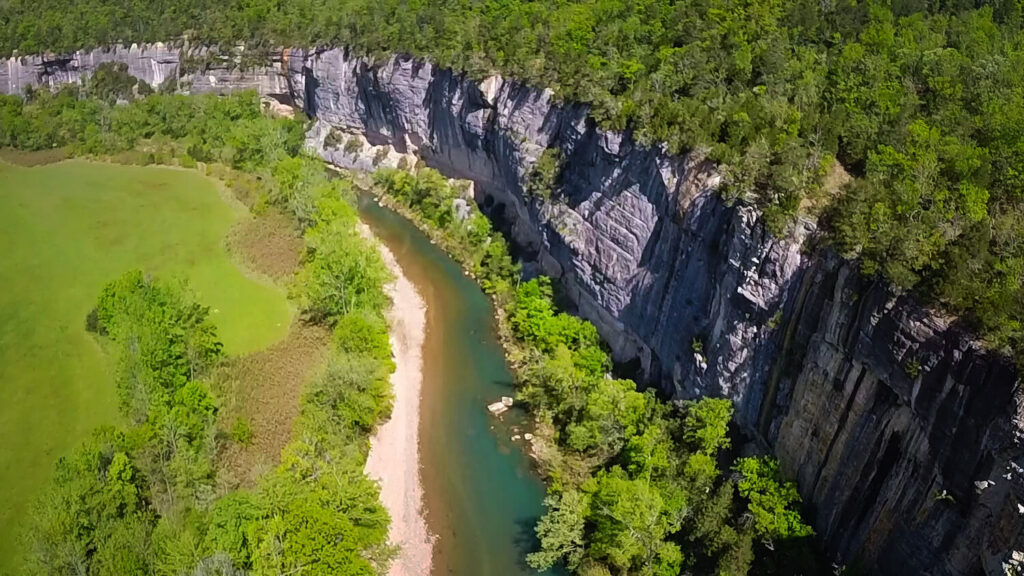
Coursing through the Ozark Mountains of northern Arkansas, the Buffalo National River represents one of America’s few remaining undammed rivers, flowing freely for 135 miles through towering limestone bluffs, lush forests, and pastoral valleys. Designated as America’s first National River in 1972, this waterway presents spectacular scenery while remaining surprisingly uncrowded outside of peak summer weekends.
The river includes multiple camping options to suit different preferences. The National Park Service maintains developed campgrounds with varying levels of amenities (from basic to those with electric and water hookups), but the most memorable experiences come from primitive camping on gravel bars along the river. According to park regulations, camping is permitted on gravel bars and sandbars along the entire river, giving paddlers the chance to find their own slice of riverside solitude. No permits are required for primitive camping, though campsites may not remain unattended for more than 24 hours.
For the full Buffalo River experience, plan a multi-day float trip, camping on gravel bars along the way. Water levels determine your launching options, particularly in the upper sections. The Upper Buffalo (Ponca to Pruitt) showcases the most dramatic scenery with towering bluffs but requires higher water levels typically found in spring. The Middle Buffalo provides a good balance of scenery and reliable floating conditions, while the Lower Buffalo features wider waters and more predictable conditions.
Floating regulations prohibit glass containers and require all food and beverages to be in sealable containers to prevent spillage. Each vessel must have a closeable trash container and proper life jackets. Beyond paddling, the area contains over 100 miles of hiking trails, refreshing swimming holes, and wildlife viewing opportunities including the state’s only elk herd. The dark skies make for spectacular stargazing, especially from the open gravel bars where nothing obstructs your view of the night sky.
3. Pictured Rocks National Lakeshore, Michigan

Stretching for over 40 miles along Lake Superior in Michigan’s Upper Peninsula, Pictured Rocks National Lakeshore showcases dramatically colorful sandstone cliffs, pristine beaches, dune formations, waterfalls, and dense forest. Despite its breathtaking beauty, this destination remains less crowded than many other national park sites, particularly during weekdays and in the shoulder seasons.
The park’s signature features are the towering, mineral-stained cliffs that rise up to 200 feet above the turquoise waters of Lake Superior. Iron, manganese, copper, and other minerals leaching from the rock have created vibrant stripes of red, orange, blue, green, and brown. While kayaking provides the most dramatic views of these formations, the 42-mile Lakeshore Trail (part of the North Country National Scenic Trail) delivers equally stunning perspectives from above.
Backcountry camping requires permits year-round and must be reserved through Recreation.gov. The park features fourteen designated backcountry campgrounds spaced at 2-5 mile intervals along the Lakeshore Trail, each containing 3-6 individual sites and some group sites. Camping costs $5 per person per night with a $15 reservation fee, and permits limit stays to 14 days per calendar year within the Lakeshore. Each campsite accommodates 1-6 people with a maximum of two tents or hammocks, and all sites include bear-proof food storage boxes.
Some of the most sought-after camping locations include Chapel Beach with its views of Chapel Rock, Mosquito Beach near the picturesque Mosquito Falls, and Coves, which grants proximity to some of the most dramatic cliff formations. Advanced reservations are strongly recommended during summer months when sites fill quickly. The backcountry here is accessible only by hiking or kayaking, with no motorized vehicles or bicycles permitted. Private shuttle services are available to help with point-to-point hikes. For those looking to experience the stunning Lake Superior shoreline with relative solitude, the spring and fall shoulder seasons boast both gorgeous weather and better availability.
4. Gila National Forest, New Mexico
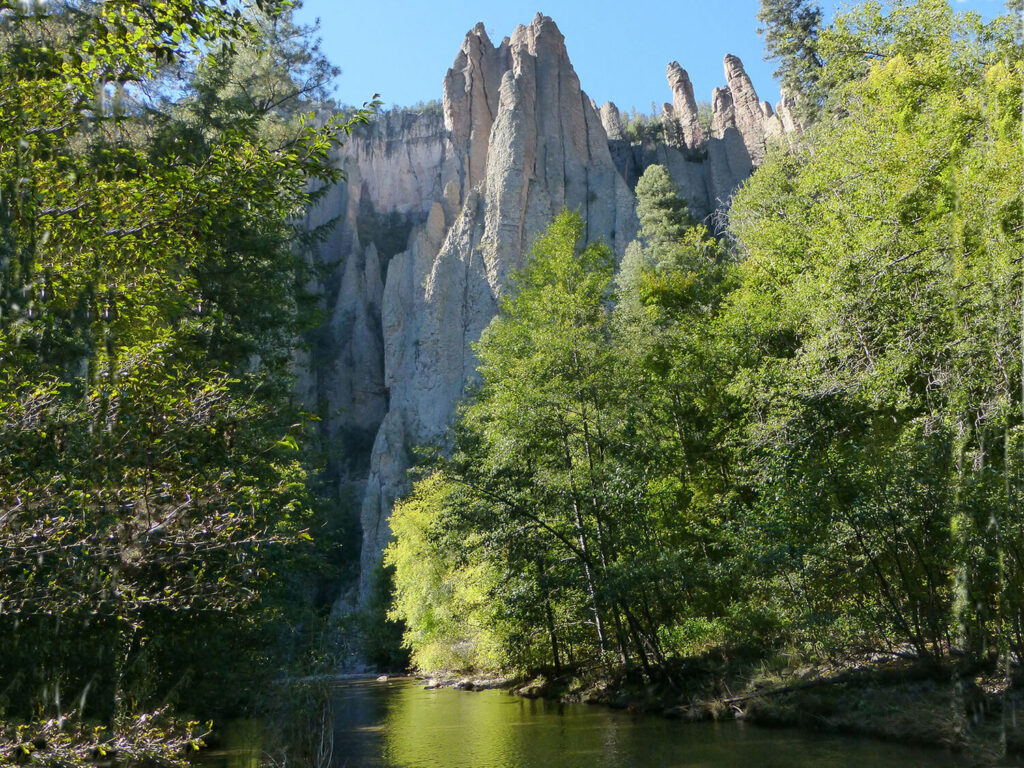
Encompassing over 3.3 million acres in southwestern New Mexico, the Gila National Forest represents one of America’s largest and most diverse wilderness areas, yet remains relatively unknown to campers outside the region. From pine-covered mountains to desert canyons and hot springs, the landscape presents incredible variety and year-round camping opportunities.
The forest is home to the Gila Wilderness, designated in 1924 as the world’s first protected wilderness area. This pristine, roadless region delivers exceptional backcountry camping for those seeking true solitude. The Middle Fork Trail leads to natural hot springs where you can soak your hiking-weary muscles while surrounded by canyon walls. For a cultural connection, visit the Gila Cliff Dwellings National Monument, where ancestral Puebloan people built their homes in natural caves over 700 years ago.
For less remote experiences, the forest maintains numerous developed campgrounds like Mesa Campground near Lake Roberts, which allows access to fishing, and Iron Creek Campground, situated in a beautiful ponderosa pine setting. The region’s climate features warm days and cool nights, with an impressive dark sky for stargazing. The elevational range from 4,500 to over 10,000 feet means you can choose your camping climate, making this a viable destination throughout much of the year.
5. Cumberland Island, Georgia
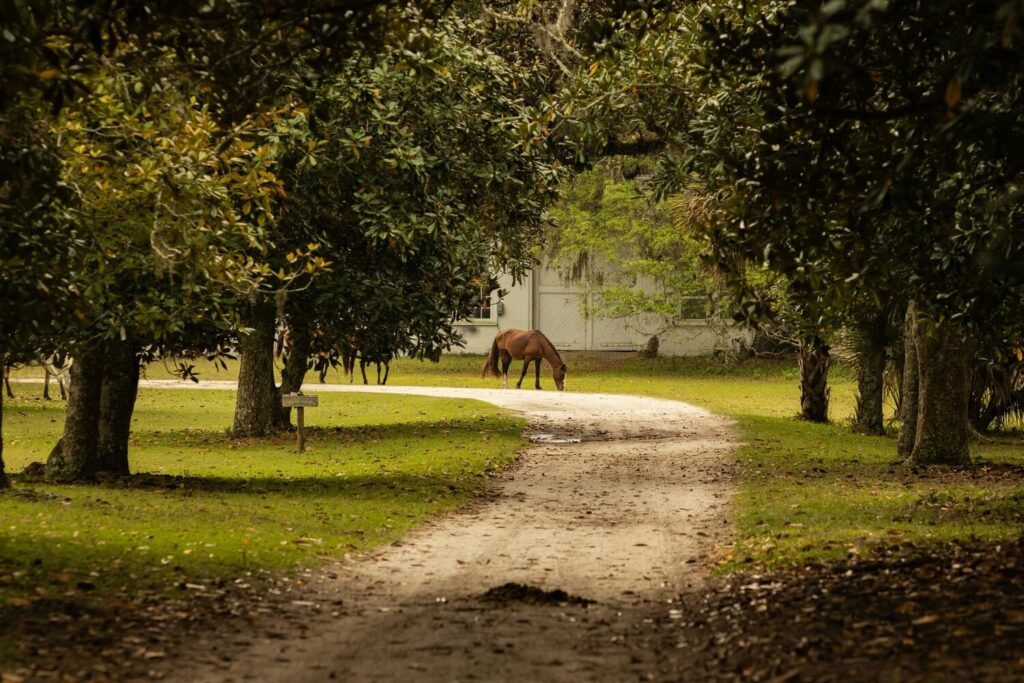
As Georgia’s largest and southernmost barrier island, Cumberland Island presents a unique camping experience where wild horses roam free among maritime forests, pristine beaches, and the ruins of 19th-century mansions. Despite its remarkable beauty and biodiversity, the National Park Service limits visitation to 300 people per day, ensuring it remains uncrowded.
Accessible only by ferry from St. Marys, Georgia, Cumberland Island stretches 17.5 miles long, with most of its 36,000 acres designated as wilderness. The island’s Atlantic beaches extend uninterrupted for nearly 18 miles, creating endless opportunities for beachcombing, swimming, and wildlife watching. Loggerhead sea turtles nest on these shores, and dolphins are frequently spotted offshore.
Camping options include the developed Sea Camp Campground, which has potable water, cold showers, and toilets, as well as more primitive wilderness sites at Stafford Beach, Hickory Hill, Yankee Paradise, and Brickhill Bluff. The wilderness sites require a 3.5 to 10.5-mile hike from the ferry dock and have no amenities beyond a fire ring. The island’s diverse ecosystems include salt marshes, maritime forest, and interior wetlands, all home to abundant wildlife including armadillos, turkeys, and the famous wild horses descended from domestic stock introduced centuries ago.
6. The Boundary Waters, Minnesota
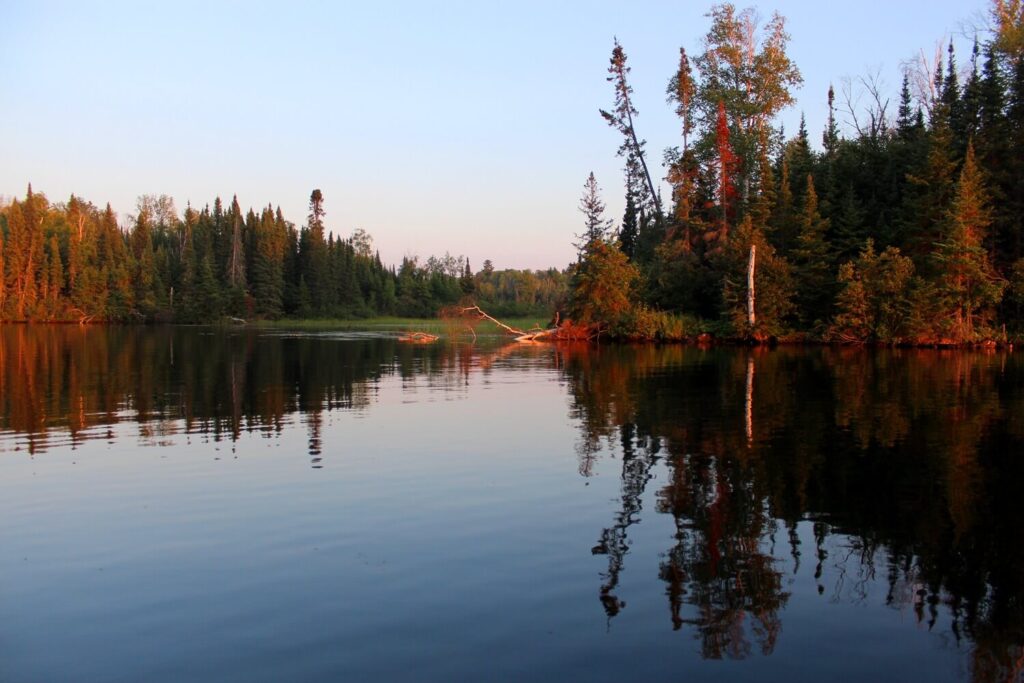
The Boundary Waters Canoe Area Wilderness (BWCAW) spans more than a million acres along Minnesota’s border with Canada, containing over 1,100 lakes and 1,500 miles of canoe routes. While well-known among paddling enthusiasts, this vast wilderness area remains a hidden gem for general campers, presenting a paddling paradise unlike any other in the country.
This pristine wilderness consists of interconnected waterways carved by glaciers thousands of years ago, creating a maze of lakes, streams, and portage trails that allow for endless exploration. Dense forests of pine, spruce, and birch surround the crystal-clear waters, providing habitat for moose, black bears, wolves, loons, bald eagles, and countless other species. The complete absence of motorized vehicles in much of the area ensures a remarkably peaceful experience.
Camping in the Boundary Waters is exclusively at designated primitive sites scattered throughout the wilderness, each marked by a fire grate and wilderness latrine. All sites are first-come, first-served, though entry permits are required and limited to maintain the wilderness character. While summer yields warm swimming opportunities and active wildlife, spring brings fewer bugs and vibrant wildflowers, while fall delivers spectacular foliage and fewer fellow travelers. Winter transforms the region into a magical landscape accessible by cross-country ski or snowshoe. Regardless of season, the BWCAW gives visitors an authentic wilderness experience with exceptional stargazing due to its dark sky designation.
7. Lost Coast Trail, California
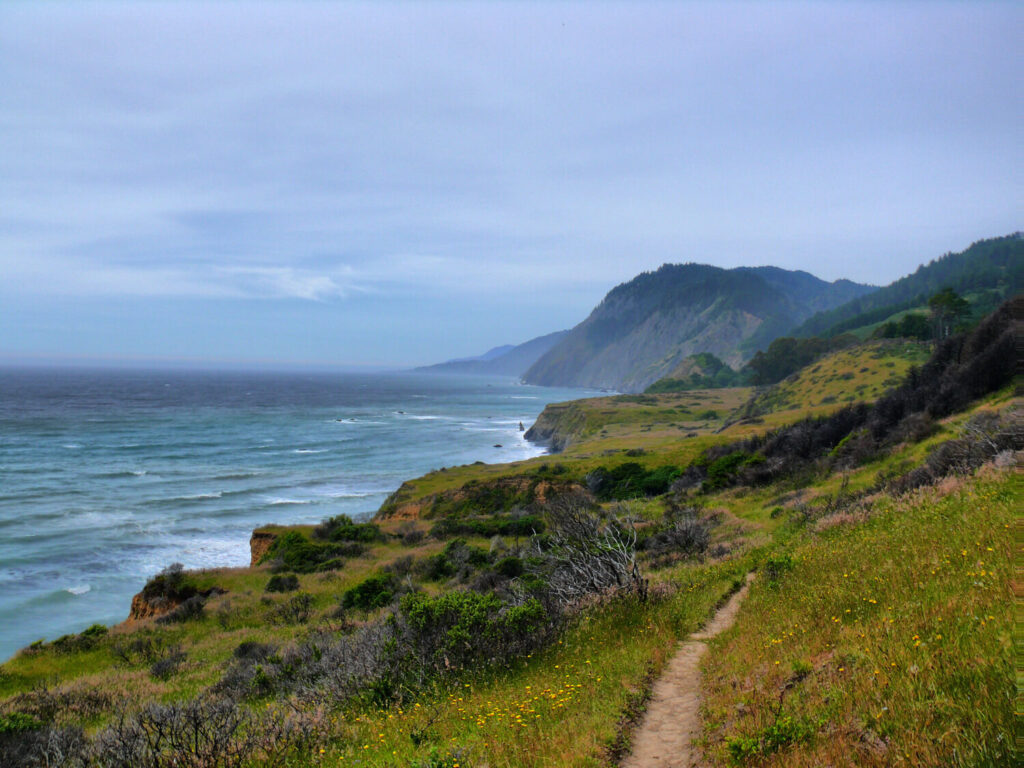
California’s Lost Coast represents one of the few places where the mountains meet the sea so dramatically that engineers couldn’t build a highway through the region, leaving a spectacular stretch of wilderness coastline that time seems to have forgotten. The Lost Coast Trail winds through this remote section of the King Range National Conservation Area, serving up an unforgettable beach camping experience for adventurous souls.
The most popular section of the trail stretches 25 miles from Mattole Beach to Black Sands Beach near Shelter Cove, with hikers typically taking 3-4 days to complete the journey. Much of the route runs directly on the beach, with hikers timing their progress around the tides, as sections become impassable during high water. The coastline is rugged and wild, with powerful surf, steep cliffs, and abundant wildlife including sea lions, harbor seals, and migrating whales.
Camping is permitted anywhere along the beach above the high tide line, allowing for maximum flexibility in planning your journey. Bear canisters are required, as black bears inhabit the area. The King Range receives the highest rainfall in California, resulting in lush vegetation and year-round streams crossing the beach. The best time to visit is typically May through October when rainfall is minimal, though fog is common in summer. The effort required to reach and hike this remote coastline ensures it remains uncrowded even during peak season, giving adventurers a true wilderness beach experience increasingly rare in the modern world.
8. Green Mountain National Forest, Vermont
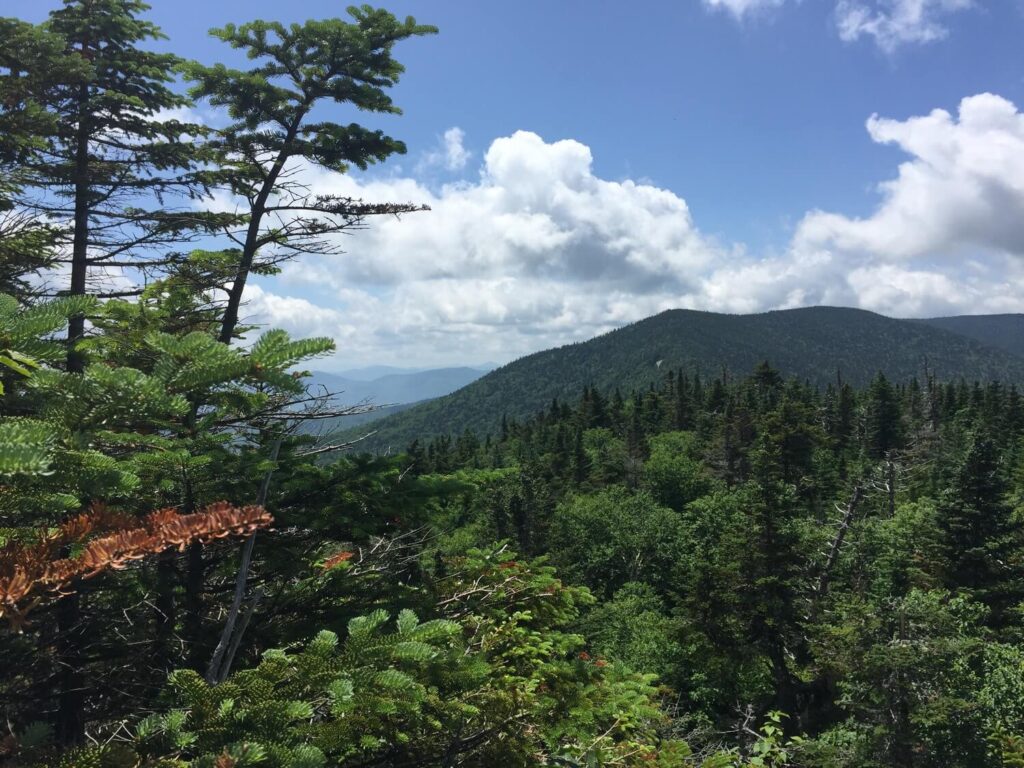
Encompassing over 400,000 acres across central and southern Vermont, Green Mountain National Forest delivers a perfect taste of New England’s natural beauty without the crowds found in more well-known destinations. This verdant forest, with its rolling mountains, clear streams, and hardwood forests, hosts four-season camping opportunities with particularly spectacular displays during autumn’s color change.
The forest contains eight developed campgrounds, including Hapgood Pond with its sandy beach, Grout Pond with canoe-in sites, and Chittenden Brook nestled in a mountain valley. For more solitude, dispersed camping is permitted throughout much of the forest, allowing you to find your own perfect spot beside a bubbling brook or atop a scenic ridge. Over 900 miles of trails, including sections of the famous Appalachian and Long Trails, create endless hiking opportunities from gentle nature walks to challenging mountain ascents.
While the forest is beautiful year-round, fall transforms it into a wonderland of crimson, orange, and gold as the maple, birch, and beech trees change color. Winter brings opportunities for snow camping and access to cross-country ski trails. The forest also contains several historic sites, including old marble quarries and charcoal kilns that tell the story of Vermont’s industrial past. Wildlife enthusiasts will appreciate chances to spot white-tailed deer, black bears, moose, and numerous bird species throughout the seasons.
9. Great Sand Dunes National Park, Colorado
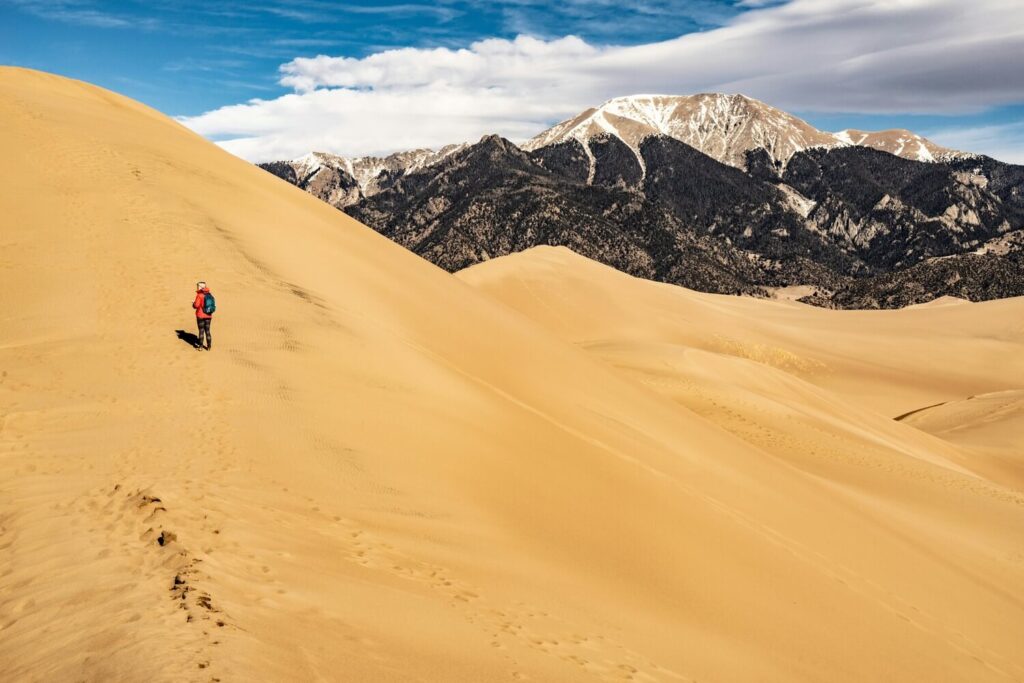
While Great Sand Dunes National Park is not exactly unknown, its backcountry camping opportunities remain a hidden gem for those seeking unique overnight experiences away from the day-use areas. The park highlights North America’s tallest dunes, rising over 750 feet against the dramatic backdrop of the Sangre de Cristo Mountains, creating a landscape of exceptional beauty and contrast.
Beyond the main dune field accessible from the visitor center, the park’s backcountry holds several distinctive camping experiences. Backpackers can obtain permits to camp anywhere in the 30-square-mile dunefield beyond the first ridge, enabling the rare experience of sleeping surrounded by an ocean of sand. As the sun sets, the dunes take on golden and purple hues, and after dark, the area’s designation as an International Dark Sky Park guarantees spectacular stargazing.
For a completely different environment within the same park, permits are available for camping in the high-elevation alpine areas of the Sangre de Cristo Mountains, where pristine lakes and meadows of wildflowers await in summer months. The nearby Medano Creek, which flows seasonally at the base of the dunes, creates a beach-like environment where children and adults alike enjoy wading and sandsurfing. The park’s remarkable diversity of ecosystems, from desert to alpine, makes it possible to experience entirely different camping environments in a single visit, all with relatively manageable crowds compared to Colorado’s more famous mountain destinations.








